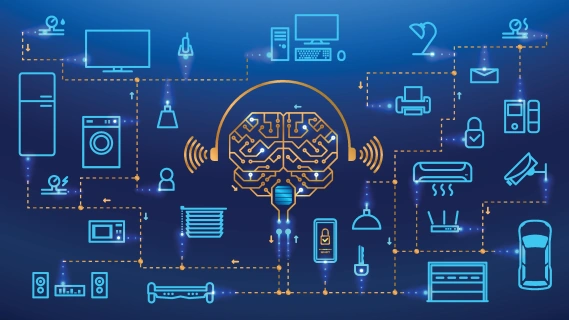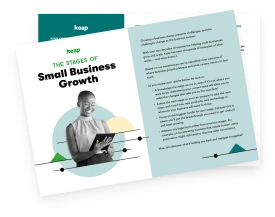The modern business world grows and changes every day. While your small business doesn’t need to be on the bleeding edge of technology, it’s important to stay up-to-date with all the trends that can benefit your customers and employees.
For example, more small businesses are online than ever. More than 71% have a website, and 36% are actively making sales online — and those percentages are only going to get bigger with time. That’s why all the latest innovations should be taken into account while choosing tech and building a business strategy.
So how can this inform your approach to using a CRM for small business? To find the answer, we have to dive into the Internet of Things.
What is the IoT?
The internet has grown and evolved at a rapid pace, and what was once a clunky, confusing world of ones and zeroes is now an everyday part of our lives. We now communicate easily with other people and connected devices all over the world. At this very moment, you can adjust your thermostat in Maine while you vacation in Belize — or see who just rang your doorbell at home when in a meeting at the office. You can even ask Artificial Intelligence how its day is going and get a jokey response about the weather near you.
These advancements started with the first effort to connect objects (things) through the Internet in 1999. The idea was to create a network that could link up physical devices with the help of sensors and software through intelligent interfaces. It’s also when Kevin Ashton introduced the term “Internet of Things” (IoT) to describe this sort of interconnectivity.
Today, the world is dependent on the IoT with more than 15 million connected devices worldwide. This makes it possible for small businesses to solve daily issues and complete tasks with ease, making it a must for leaders looking to find efficiencies and reach new customers.
How to improve your CRM with the IoT
Customers are able to get unlimited info about any company they are researching, including its products, delivery options and more. This leads to customers buying items on their own, rather than working with a sales representative. In fact, 65% of B2B companies were selling exclusively online in 2022. This means sales reps have to embrace technology and change sales techniques to stay in the game — and this means taking advantage of a small business CRM and the IoT.
How can your sales team use IoT?
Customers are the primary resource and the driving force behind any business. That's why understanding both the customer journey and lifecycle is so important.
For example, many service-based businesses have found that capturing and nurturing leads is enhanced with the help of IoT-connected devices. However, this assumes that the customer information you encounter with this interaction is being stored in a CRM.
Collecting your prospects’ data and organizing it into a CRM for small business, like Keap, allows your sales team to connect to the prospect, provide what they need to become a customer and lay the groundwork for long-term customer service.
Here are some other small business CRM opportunities that are possible with the IoT:
Shaping the customer journey
Small business leaders can improve sales by analyzing search trends, previous purchases, online browsing and smartphone use. This allows the sales team to implement targeted strategies, serve relevant content and provide upsells, when applicable.
Improving the customer experience
Using the IoT can help companies distinguish themselves from other businesses. For example, Disney Parks use MagicBands and mobile apps to track their visitors’ data and improve their park experience with up-to-the-minute information and suggestions. Visitors feel their experience is personalized when they receive a birthday greeting or shop with a simple swipe of their band. Long term, Disney reaps the benefits of tracking user behavior, using everything they learn to manage planning and operations for the parks.
Streamlining ecommerce logistics
Consistent pipeline management is a primary factor in retail success. IoT-connected devices can help implement pipeline management by providing complete tracking and control of the sales cycle.
That’s where GPS- and RFID-enabled devices come in handy. With this technology, the sales manager can get data about product placement, the current processing stage and more. At the same time, the customer can get accurate information about the delivery time. This can help reduce travel times and costs, while the savings can be passed onto the customer.
Ready to get started with the best CRM for small business and the IOT?
Pairing IoT-connected devices with a powerful small business CRM, like Keap, can increase the power of your sales team. So let’s set them up for success: Give Keap a try now, absolutely free, for a trial 14-day period.
You can also see how your small business is doing in comparison to others in your industry, identify company strengths and reveal gaps with Keap’s Lifecycle Automation Assessment. It’s a game changer for many small businesses, just like yours.


